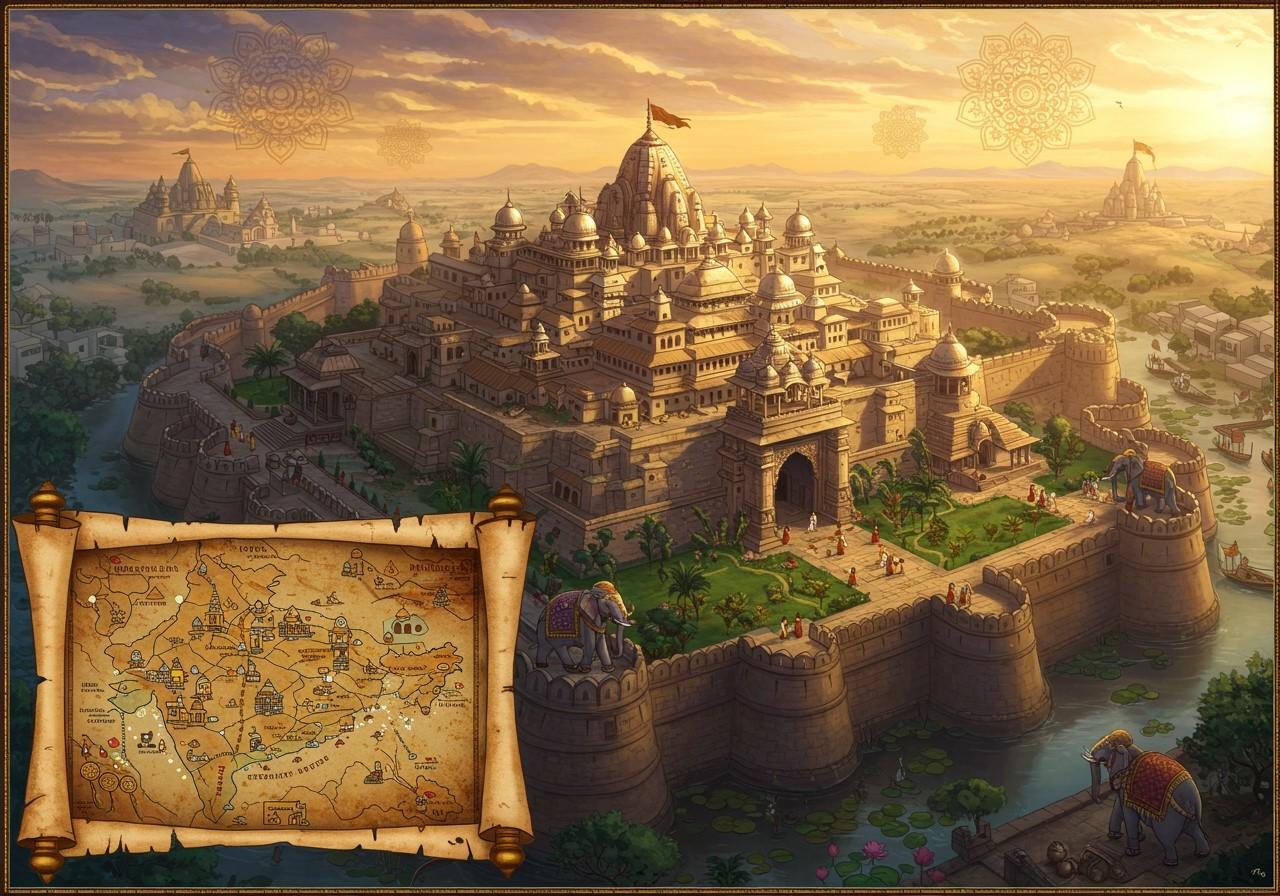
The Vakataka Empire, a prominent power in ancient India, flourished between the mid-3rd century and 500 CE. This dynasty significantly influenced the socio-economic and cultural landscape of the Deccan and beyond. This blog delves into the Vakataka Empire’s origins, capitals, geographical reach, and lasting impact, offering a comprehensive understanding of its contributions to Indian history.
Origins and Rise of the Vakataka Empire
Emerging in the central Deccan region around the mid-3rd century CE, the Vakataka dynasty was founded by Vindhyashakti. His strategic political maneuvers and military prowess laid the foundation for a powerful empire. The Vakatakas, of Brahmanical origin belonging to the Vishnuvriddha gotra, actively engaged with contemporary powers like the Gupta Empire and Satavahanas, forging alliances and engaging in conflicts that shaped the Deccan’s socio-political environment. They were known for performing numerous Vedic sacrifices.
The Vakatakas established a well-structured administration, essential for managing their vast territory. Inscriptions provide valuable insights into their governance practices, shedding light on their reign and historical context.
Capitals of the Vakataka Empire
The Vakataka Empire had two primary capitals: Pravarapura (sometimes identified with Paunar) and Vatsagulma (present-day Washim). Emperor Pravarasena I founded Pravarapura, a city known for its notable architectural features and urban planning. Vatsagulma served as the capital for a different branch of the dynasty.
These capitals were vibrant centers of cultural and religious activity. They played a vital role in facilitating trade networks, contributing significantly to the empire’s economic prosperity. Archaeological discoveries and historical records offer glimpses into the lives and activities within these important urban centers.
Mapping the Vakataka Empire
At its zenith, the Vakataka Empire extended across parts of modern-day Maharashtra, Madhya Pradesh, Gujarat, and Telangana, reaching from Malwa and Gujarat in the north to the Tungabhadra River in the south, and from the Arabian Sea in the west to the Bay of Bengal in the east. Historians utilize historical maps and geographical data to reconstruct the empire’s boundaries.
The empire’s strategic location fostered cultural and linguistic diversity. Its position also influenced interactions with neighboring kingdoms, leading to both peaceful exchanges and periods of conflict.
Influence of the Vakataka Empire
The Vakatakas were renowned patrons of art and architecture. Their support is evident in the magnificent Ajanta Caves, a UNESCO World Heritage Site showcasing exquisite murals and sculptures. They also fostered cultural ties with the Gupta Empire.
The Vakataka period witnessed substantial literary and scholarly advancements. The rulers actively promoted education and intellectual pursuits, creating an environment conducive to learning and creativity.
The Vakataka legacy in art and architecture influenced subsequent dynasties. Their contributions to Indian culture remain visible today, particularly through architectural marvels like the Ajanta Caves, a testament to their enduring impact.
Poojn.in: Connecting You to India’s Rich Heritage
Poojn.in, India’s leading online store for cultural and religious goods, offers a wide range of products that connect you with India’s rich traditions. As you delve into the fascinating history of the Vakataka Empire, consider exploring these items that resonate with ancient Indian practices:
-
Brass Diyas and Incense Holders: Enhance your puja space with beautifully crafted brass items, reminiscent of those used in ancient temples during the Vakataka era. We offer a variety of sizes and designs to suit your preferences.
-
Puja Thalis and Ritual Items: Find everything you need for traditional Hindu ceremonies, including thalis, bells, and other essential items, crafted with authenticity and reverence, echoing the practices of the Vakataka period.
-
Sacred Materials: Source high-quality kumkum, haldi, and other ritual ingredients, ensuring the purity and sanctity of your traditional practices, much like those observed during the Vakataka dynasty.
Visit www.poojn.in to discover our extensive collection of traditional puja items. We offer:
- Verified authentic products sourced with utmost care
- Pan-India delivery for your convenience
- Expert guidance on product selection to assist you in making informed choices
- Multiple size and quantity options to cater to your specific needs
- Secure online ordering for a safe and seamless shopping experience
Conclusion
The Vakataka Empire’s story is a captivating chapter in ancient Indian history. From its origins in the Deccan to its expansion across a significant portion of South-Central India, the dynasty left an indelible mark on the region’s socio-economic and cultural fabric. Their capitals served as centers of both administration and cultural exchange. The Vakatakas’ patronage of art, architecture, and literature, exemplified by the Ajanta Caves, remains a testament to their enduring legacy. By exploring their history, we gain a deeper appreciation for India’s rich and diverse heritage.


